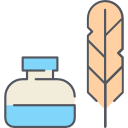Text
Plant resources of South-East Asia Plants producing exudates
Exudates are generally obtained by tapping trees (Latexes, resins, gums). A few of them, such as rubber and pine resin, are economically very important: in South-East Asia, rubber is a major source of income for well over 1 million households. Other exudates, however, have not been able to compete with synthetic substitutes and have declined in importance or have fallen out of use. Of the exudates that are still commercially important, resins are applied in paints and varnishes, yiels essential oils and are transformed chemically into a variety of products, where as latexes yield rubber, prized for its elasticity, and gutta-percha, a non-elastic but thermoplastic product. In this volume the former, current and potential uses of plant exudates are discussed, in the hope that this may revitalize production systems that include exudate-producing plants. In the introductory chapter, in addition to the botany, ecology and management of exudate-producing species, the different tapping techniques are highlightes and put into perspective. The following 15 papers deal in detail with individual species, including those yielding copal, pine resin, damar, elemi, benzoin, gurjun balsam, sepetir wood oil, jelutong, rubber, and gutta-percha. About 40 minor species producing exudates are also treated briefly.
Ketersediaan
Informasi Detail
- Judul Seri
-
-
- No. Panggil
-
333.953 BOE p
- Penerbit
- Bogor Selatan : PT. Pembangunan., 2000
- Deskripsi Fisik
-
189 hlm.: ilus.; index; 27 cm.
- Bahasa
-
Inggris
- ISBN/ISSN
-
9057820722
- Klasifikasi
-
333.953
- Tipe Isi
-
-
- Tipe Media
-
-
- Tipe Pembawa
-
-
- Edisi
-
no 18
- Subjek
- Info Detail Spesifik
-
-
- Pernyataan Tanggungjawab
-
-
Versi lain/terkait
Tidak tersedia versi lain
Lampiran Berkas
Komentar
Anda harus masuk sebelum memberikan komentar

 Karya Umum
Karya Umum  Filsafat
Filsafat  Agama
Agama  Ilmu-ilmu Sosial
Ilmu-ilmu Sosial  Bahasa
Bahasa  Ilmu-ilmu Murni
Ilmu-ilmu Murni  Ilmu-ilmu Terapan
Ilmu-ilmu Terapan  Kesenian, Hiburan, dan Olahraga
Kesenian, Hiburan, dan Olahraga  Kesusastraan
Kesusastraan  Geografi dan Sejarah
Geografi dan Sejarah